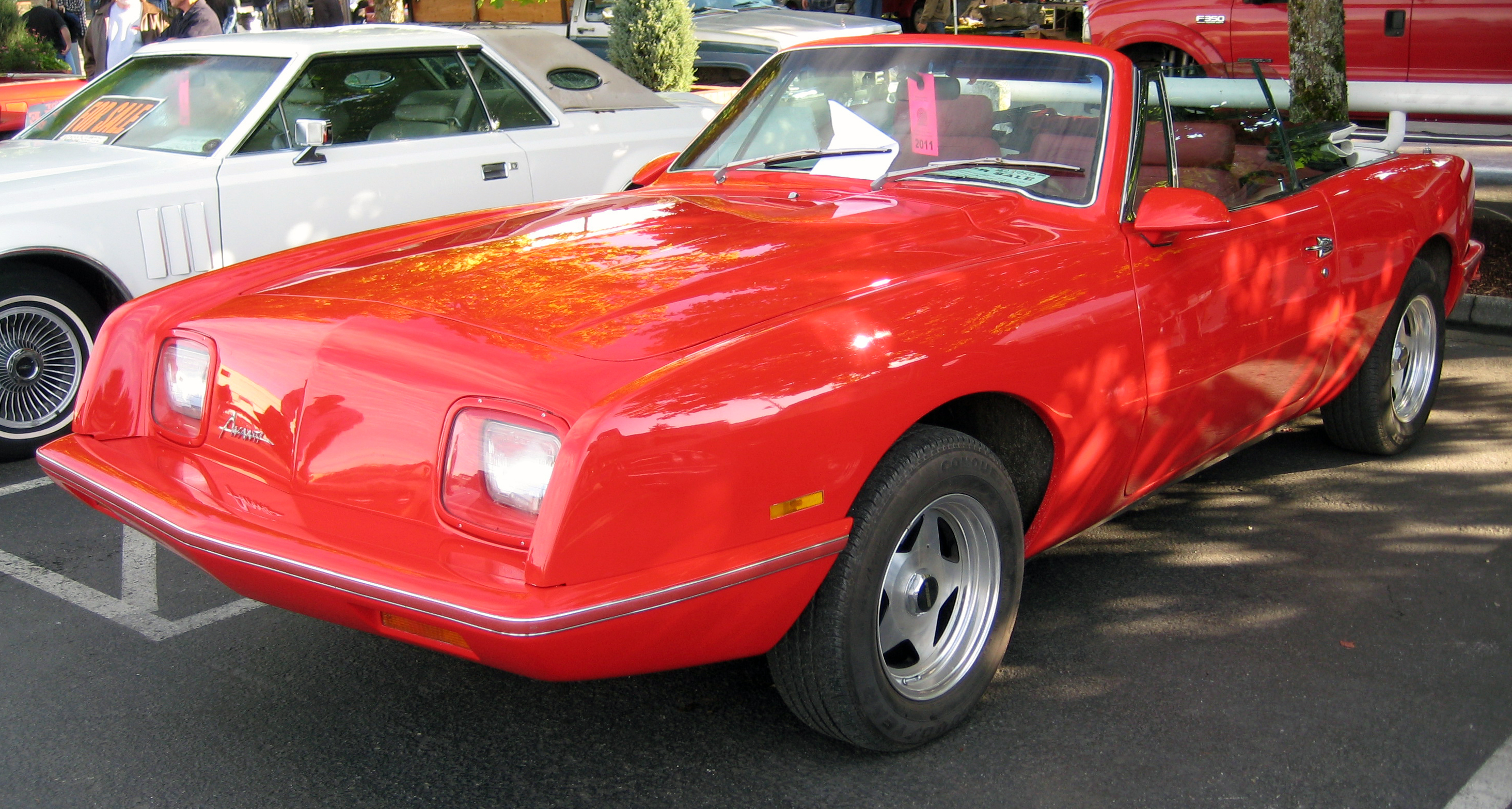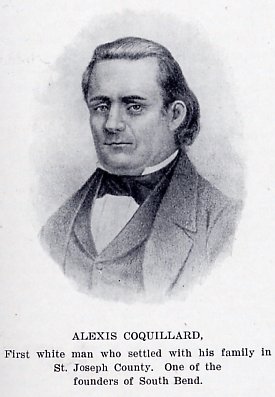|
Studebaker
Studebaker was an American wagon and automobile manufacturer based in South Bend, Indiana, with a building at 1600 Broadway, Times Square, Midtown Manhattan, New York City. Founded in 1852 and incorporated in 1868 as the Studebaker Brothers Manufacturing Company, the firm was originally a coachbuilder, manufacturing wagons, buggies, carriages and harnesses. Studebaker entered the automotive business in 1902 with electric vehicles and in 1904 with gasoline vehicles, all sold under the name "Studebaker Automobile Company". Until 1911, its automotive division operated in partnership with the Arthur Lovett Garford, Garford Company of Elyria, Ohio, and after 1909 with the E-M-F Company and with the Flanders (automobile company), Flanders Automobile Company. The first gasoline automobiles to be fully manufactured by Studebaker were marketed in August 1912. Over the next 50 years, the company established a reputation for quality, durability and reliability. After an unsuccessful 1954 ... [...More Info...] [...Related Items...] OR: [Wikipedia] [Google] [Baidu] [Amazon] |
Clement Studebaker
Clement Studebaker (March 12, 1831 – November 27, 1901) was an American wagon and carriage manufacturer. With his brother Henry, he co-founded the H & C Studebaker Company, precursor of the Studebaker Corporation, which built Pennsylvania-German Conestoga wagons and carriages during his lifetime, and automobiles after his death, in South Bend, Indiana. Early life Clement Studebaker was born on March 12, 1831, in East Berlin, Adams County, Pennsylvania, to Rebecca (née Mohler) and John Studebaker. He was of Pennsylvania Dutch heritage. At a young age, he had learned to work as a blacksmith in his father's shop in Ashland, Ohio. At the age of twenty, Studebaker moved to Indiana and taught school in St. Joseph County, Indiana.North American Light and Power Company 1916 - signed by Clem ... [...More Info...] [...Related Items...] OR: [Wikipedia] [Google] [Baidu] [Amazon] |
John Studebaker
John Mohler Studebaker (10 October 1833 – 16 March 1917) was the Pennsylvania Dutch co-founder and later executive of what would become the Studebaker, Studebaker Corporation automobile company. He was the third son of the founding Studebaker family, and played a key role in the growth of the company during his years as president (corporate title), president, from 1868 until his death in 1917. Career John Mohler Studebaker was born in Gettysburg, Pennsylvania to John S. and Rebecca Mohler Studebaker, and moved to Ashland County, Ohio with his family in 1836. While his two elder brothers Henry and Clement Studebaker, Clem became blacksmiths, John went to Placerville, California, lured by stories of the California Gold Rush, gold rush.Studebaker Family History frothis siteretrieved March 11, 2007 After arriving, he realized that much mining employment in California had been taken, and he accepted an opportunity to manufacture wheelbarrows for miners, earning himself the nickname o ... [...More Info...] [...Related Items...] OR: [Wikipedia] [Google] [Baidu] [Amazon] |
Packard
Packard (formerly the Packard Motor Car Company) was an American luxury automobile company located in Detroit, Michigan. The first Packard automobiles were produced in 1899, and the last Packards were built in South Bend, Indiana, in 1958. One of the "Three Ps" – alongside Peerless Motor Company and Pierce-Arrow – the company was known for building high-quality luxury automobiles before World War II. Owning a Packard was considered prestigious, and surviving examples are often found in museums and automobile collections. Packard vehicles featured innovations, including the modern steering wheel, air-conditioning in a passenger car, and one of the first production 12-cylinder engines, adapted from developing the Liberty L-12 engine used during World War I to power warplanes. During World War II, Packard produced 55,523 units of the two-stage/two-speed supercharger equipped Merlin V-12s engines under contract with Rolls-Royce. Packard also made the versions of the Li ... [...More Info...] [...Related Items...] OR: [Wikipedia] [Google] [Baidu] [Amazon] |
Peter Studebaker
Peter Everst Studebaker (April 1, 1836 – October 9, 1897) was treasurer and chairman for the Studebaker wagon business. He was known for helping his brothers expand the business to St. Joseph, Missouri, Chicago and throughout the United States in the 1860s and 1870s. Early life Peter Everst Studebaker was born on April 1, 1836, in Ashland, Ohio, to Rebecca and John C. Studebaker. He attended schools in Ashland. Studebaker moved to South Bend, Indiana, in 1852 and worked as a clerk at a dry goods store. He then started a merchandising business as a peddler. Career In 1856, Studebaker moved to Goshen, Indiana, to open a retail business with his brother-in-law Phillip Welch. In 1860, Studebaker became a dealer for the Studebaker wagon business of his two older brothers, Henry and Clement. In 1864, he joined the company officially. He was then placed in charge of sales and moved to St. Joseph, Missouri, to establish the first retail branch of the company in 1865. The branch was or ... [...More Info...] [...Related Items...] OR: [Wikipedia] [Google] [Baidu] [Amazon] |
Studebaker-Packard Corporation
The Studebaker-Packard Corporation is the entity created in 1954 by the purchase of the Studebaker Corporation of South Bend, Indiana, by the Packard Motor Car Company of Detroit, Michigan. While Studebaker was the larger of the two companies, Packard's balance sheet and executive team were stronger than that of the South Bend company. In the spring of 1962, Studebaker-Packard reverted its name to "Studebaker Corporation". The following year, the South Bend plant was closed, while its Canadian plant in Hamilton, Ontario, continued to produce Studebaker cars until 1966. The South Bend plant would later be acquired by the Avanti Motor Company. Studebaker Corp. merged with Worthington Corporation one year later. Studebaker-Worthington was a diversified American manufacturer operating the various business units of Studebaker, Wagner Electric and Worthington Corporation. The company was in turn acquired by McGraw-Edison in 1979. Purposes of merger It was hoped that Packard wo ... [...More Info...] [...Related Items...] OR: [Wikipedia] [Google] [Baidu] [Amazon] |
E-M-F Company
The E-M-F Company was an early American automobile manufacturer that produced automobiles from 1909 to 1912. The name E-M-F was gleaned from the initials of the three company founders: Barney Everitt (a custom auto-body builder from Detroit), William Metzger (formerly of Cadillac), and Walter Flanders (who had served as Henry Ford's production manager). AtGoogle Books(description only) Origins Everitt Byron Forbes "Barney" Everitt was born in 1873 at Ridgetown, Ontario, and learned wagon-building in Chatham, Ontario. In the early 1890s he worked for carriage-maker Hugh Johnson in Detroit.Rubenstein, James M. The Changing US Auto Industry: A geographical analysis' Routledge 1992. At Google Books In 1899 he started his own coachwork company, with orders from Ransom Olds, and then Henry Ford. In about 1904 his own first assembled car was the Wayne. The car model bearing his name was the Everitt, 1909-1912. Metzger William E. Metzger was born 1868 in Peru, Illinois. He was o ... [...More Info...] [...Related Items...] OR: [Wikipedia] [Google] [Baidu] [Amazon] |
Studebaker-Worthington
Studebaker-Worthington was a diversified American manufacturer created in 1967 through a merger of Studebaker Corporation, Wagner Electric and Worthington Corporation. The company was in turn acquired by McGraw-Edison in 1979. Origins Founded in 1852, Studebaker began as a wagon manufacturer which eventually entered the automobile business in the early 1900s. However, since the early 1950s sales had been steadily declining resulting in a lack of funds to develop new models. In December 1963 Randolph H. Guthrie, chairman of Studebaker, announced that the company was closing down its automobile factory in South Bend Indiana, where it had made cars for 50 years, but would continue to make cars in Hamilton, Ontario. In 1965 auto sales were slightly less than $45 million. On 4 March 1966 Studebaker announced the termination of auto production after less than 9,000 1966 models had been produced. Management said the decision was due to "heavy and irreversible losses" in the automobi ... [...More Info...] [...Related Items...] OR: [Wikipedia] [Google] [Baidu] [Amazon] |
Avanti Motor Company
The Avanti (including the Avanti II) is an American performance sports coupe based on the Studebaker Avanti and marketed through a succession of five different ownership arrangements between 1965 and 2006. After Studebaker's December 20, 1963, closure of its South Bend factory and effective discontinuation of the auto with the 1964 model year, cars carrying the Avanti nameplate were initially produced from leftover Studebaker components, and later by the Avanti Motor Company from General Motors and Ford chassis and engines. A small and often interrupted stream of increasingly modified cars was made before all production ceased in 2006. Avanti II Altman and Newman After Studebaker ended production at South Bend on December 20, 1963, the "Avanti" model name, tooling, Studebaker truck production rights, as well as parts and plant space were bought by local Studebaker dealers, Nate and Arnold Altman and Leo Newman, who incorporated as Avanti Motor Corporation and hand-built a s ... [...More Info...] [...Related Items...] OR: [Wikipedia] [Google] [Baidu] [Amazon] |
South Bend, Indiana
South Bend is a city in St. Joseph County, Indiana, United States, and its county seat. It lies along the St. Joseph River (Lake Michigan), St. Joseph River near its southernmost bend, from which it derives its name. It is the List of cities in Indiana, fourth-most populous city in Indiana with a population of 103,453 at the 2020 United States census, 2020 census. Located directly south of Indiana's northern border with Michigan, South Bend anchors the broader Michiana region. Its South Bend-Mishawaka metropolitan area, metropolitan area had a population of 324,501 in 2020, while its combined statistical area had 812,199 residents. The area was first settled in the early 19th century by fur traders and was established as a city in 1865. The St. Joseph River shaped South Bend's economy through the mid-20th century. River access assisted heavy industrial development such as that of the Studebaker, Studebaker Corporation and the Oliver Corporation, Oliver Chilled Plow Company. Lik ... [...More Info...] [...Related Items...] OR: [Wikipedia] [Google] [Baidu] [Amazon] |
Worthington Corporation
The Worthington Corporation was a diversified American manufacturer that had its roots in Worthington and Baker, a steam pump manufacturer founded in 1845. In 1967 it merged with Studebaker and Wagner Electric to form Studebaker-Worthington. This company was in turn acquired by McGraw-Edison in 1979. Worthington Pump Works (1845–1899) Worthington and Baker, manufacturers of hydraulic machinery such as steam pumps and meters, was founded by Henry R Worthington and William H. Baker. Worthington was the inventor of the direct acting steam pump. The first foundry was near the Brooklyn Navy Yard. In 1854 the partners moved to Van Brunt Street in Brooklyn. The partnership was dissolved around 1860 when Baker died. A new partnership called Henry R. Worthington, or Worthington Hydraulic Pump Works, was formed in 1862. The United States Navy used Worthington pumps to pump boiler feed water, bilge water, and water for fire fighting and general services aboard various ships during ... [...More Info...] [...Related Items...] OR: [Wikipedia] [Google] [Baidu] [Amazon] |
Frederick Samuel Fish
Frederick Samuel Fish (8 February 1852 – 13 August 1936), born in Newark, was an American lawyer, politician and automotive manufacturing executive. Originally a successful corporation lawyer, he entered the Studebaker corporation through marriage and became the corporation's president in 1909 and chairman of the board from 1915 to 1935. He is credited with introducing the manufacture of Studebaker cars, first electric, then gasoline-powered. Early life His parents were the Rev. Henry Clay and Clarissa (Jones) Fish. He attended Newark Academy and entered the University of Rochester, graduating with a B.A. degree in 1873. He then studied law, was admitted to the New Jersey Bar in 1876, and practised in Newark and in New York City from 1876 to 1890. Political career He was city attorney of Newark (1880–1884), a member of the New Jersey General Assembly (1884–85) and a member of the New Jersey Senate from Essex County (1885–1887), serving as president of that body during ... [...More Info...] [...Related Items...] OR: [Wikipedia] [Google] [Baidu] [Amazon] |




